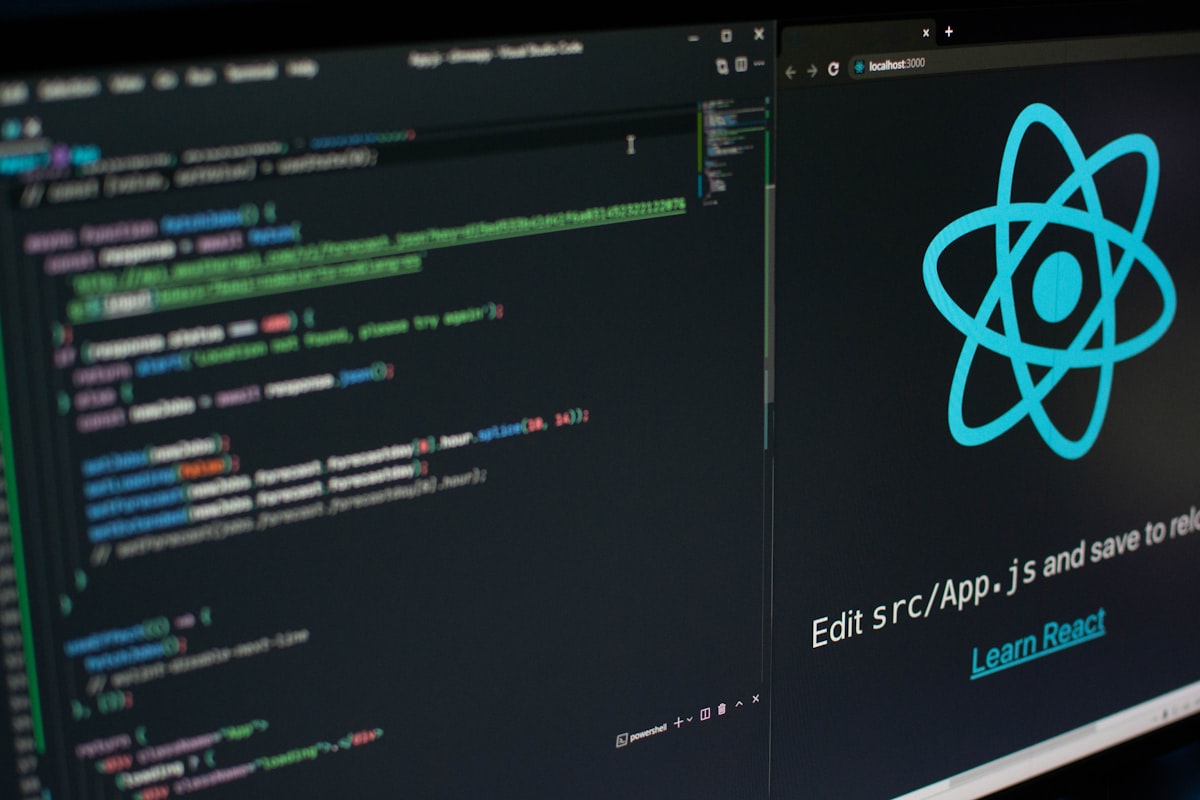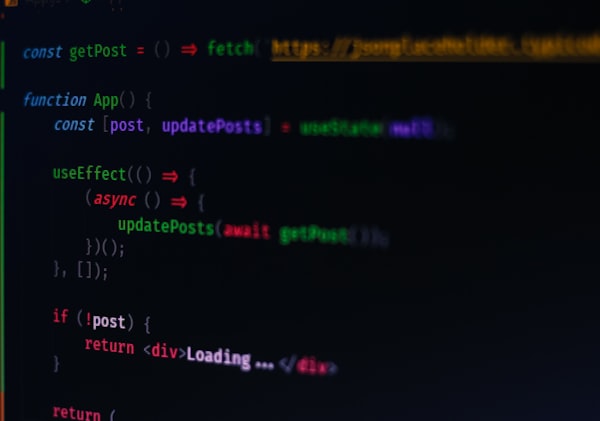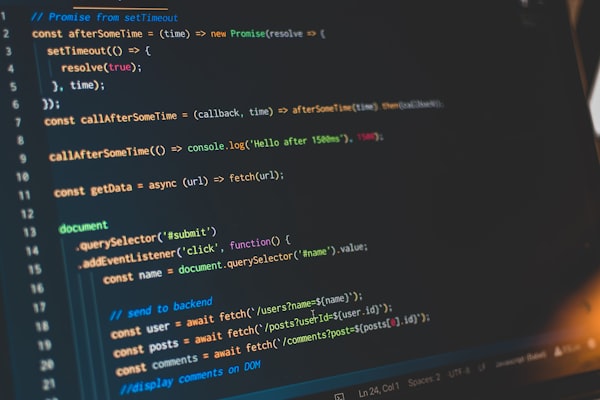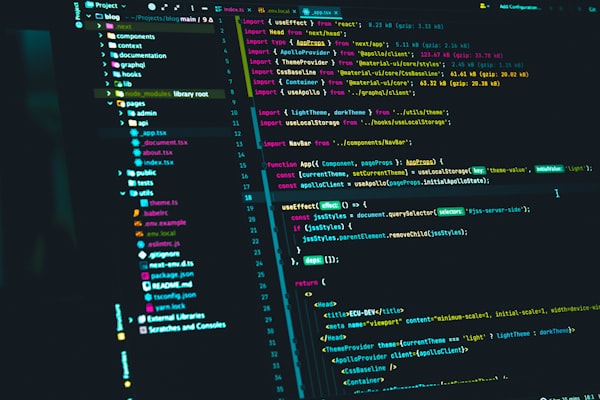Understanding the Basics: What Are JavaScript Closures?
Get your helmets on, folks, because we're about to go spelunking into the cavernous wonders of JavaScript Closures! Now, you might be wondering, "What on Earth is a JavaScript Closure?" Well, let me tell you, it's not a JavaScript feature deciding to shut up shop for the day. No, siree!
A JavaScript Closure, my curious compadres, is a function bundled snugly with its lexical environment. "Lexical what now?" you might be gasping. Well, lexical environment is fancy programmer lingo for where the function was born – it's home, it's context. This special bond between a function and its birthplace allows the function to access and manipulate variables even when it's called outside its birthplace. Imagine being at work and still being able to raid your fridge at home – that's what closures allow functions to do!
So, to put it simply, a closure gives a function a permanent record – like a superbrain that remembers its lexical environment. And this superbrain is absolutely critical in JavaScript coding, so buckle up, because we're about to dive deeper into this fascinating world. We’re not in Kansas anymore, Toto!
The Role of Scope in JavaScript Closures
Ladies and gents, step right up and behold the fantastic spectacle of JavaScript scope! It's like a variety show – we've got global scope, local scope, and the star of our show, closure scope! They're all part of the high-wire act that is JavaScript coding.
First, let's start with the ringmaster, the global scope. Think of it like the Earth – it's our home base, accessible by everyone. Variables declared in the global scope? They're like celebrities; everyone knows them, everyone can access them.
Next up, we've got the local scope, the hometown heroes. These variables are declared within a function, and just like home-cooked meals, they can only be enjoyed within the confines of that particular function. Step outside the function, and poof! They're gone.
Now, for the main event – closure scope. This is where the magic happens, folks! Remember our function from earlier, the one with the superbrain? Well, this is what gives it its superpowers. When a function is declared, it creates a local scope. But thanks to the magical marvel of closure scope, even when that function is called outside of its original scope, it can still remember its roots.
So, JavaScript scope is like the invisible hand, guiding and directing where our variables can and can't go. Without it, our superbrain function would be as forgetful as a goldfish. So next time you're marveling at the wizardry of JavaScript Closures, give a tip of the hat to the unsung hero, JavaScript Scope! It's the secret sauce to the spicy meatball that is JavaScript Closures.
Oh, and remember to clean up after your variables, folks. Nobody likes a messy scope!
The Mechanics of JavaScript Closures: A Detailed Look
Ladies and gents, step right up and behold the fantastic spectacle of JavaScript scope! It's like a variety show – we've got global scope, local scope, and the star of our show, closure scope! They're all part of the high-wire act that is JavaScript coding.
First, let's start with the ringmaster, the global scope. Think of it like the Earth – it's our home base, accessible by everyone. Variables declared in the global scope? They're like celebrities; everyone knows them, everyone can access them.
Next up, we've got the local scope, the hometown heroes. These variables are declared within a function, and just like home-cooked meals, they can only be enjoyed within the confines of that particular function. Step outside the function, and poof! They're gone.
Now, for the main event – closure scope. This is where the magic happens, folks! Remember our function from earlier, the one with the superbrain? Well, this is what gives it its superpowers. When a function is declared, it creates a local scope. But thanks to the magical marvel of closure scope, even when that function is called outside of its original scope, it can still remember its roots.
So, JavaScript scope is like the invisible hand, guiding and directing where our variables can and can't go. Without it, our superbrain function would be as forgetful as a goldfish. So next time you're marveling at the wizardry of JavaScript Closures, give a tip of the hat to the unsung hero, JavaScript Scope! It's the secret sauce to the spicy meatball that is JavaScript Closures.
Oh, and remember to clean up after your variables, folks. Nobody likes a messy scope!
Why Are JavaScript Closures Important? Practical Benefits
Well, gather around folks, it's story time! Imagine you're a wizard – a JavaScript wizard, to be precise. You have this phenomenal magic called JavaScript closures at your disposal. But why should you care? Why are closures worth more than a hill of beans in this crazy coding world?
First off, let's tackle the elephant in the room. No, closures aren't just there to confound newbie coders and provide a topic for nerdy coder cocktail parties. They're actually one of the most robust tools in the JavaScript toolkit!
Closures are like a swiss army knife for developers. Need to create a function factory (a function that churns out other functions like a well-oiled machine)? Closures are your best bet. Want to protect a variable from the prying eyes of other functions? Bam! Closure to the rescue. Need to set a timer or delay a reaction? Boom! Closures can make it happen.
And the pièce de résistance, closures let us use data hiding and encapsulation, a fundamental principle in object-oriented programming. Like a treasure chest that only your function has a map to, closures keep data safe and sound.
JavaScript closures are also the unsung heroes behind JavaScript libraries and frameworks like React and Node.js. Ever heard of a little thing called callbacks? Yep, closures are at the heart of those too.
So, in short, JavaScript closures are the superhero of the JavaScript world, swooping in to save the day when you need powerful, flexible, and secure code. They're not just a cool feature to show off to your friends; they're practical, versatile, and oh so useful. If JavaScript were a band, closures would be the lead singer – the star of the show. And the crowd goes wild!
Common Use Cases: Where are JavaScript Closures Used?
Well, gather around folks, it's story time! Imagine you're a wizard – a JavaScript wizard, to be precise. You have this phenomenal magic called JavaScript closures at your disposal. But why should you care? Why are closures worth more than a hill of beans in this crazy coding world?
First off, let's tackle the elephant in the room. No, closures aren't just there to confound newbie coders and provide a topic for nerdy coder cocktail parties. They're actually one of the most robust tools in the JavaScript toolkit!
Closures are like a swiss army knife for developers. Need to create a function factory (a function that churns out other functions like a well-oiled machine)? Closures are your best bet. Want to protect a variable from the prying eyes of other functions? Bam! Closure to the rescue. Need to set a timer or delay a reaction? Boom! Closures can make it happen.
And the pièce de résistance, closures let us use data hiding and encapsulation, a fundamental principle in object-oriented programming. Like a treasure chest that only your function has a map to, closures keep data safe and sound.
JavaScript closures are also the unsung heroes behind JavaScript libraries and frameworks like React and Node.js. Ever heard of a little thing called callbacks? Yep, closures are at the heart of those too.
So, in short, JavaScript closures are the superhero of the JavaScript world, swooping in to save the day when you need powerful, flexible, and secure code. They're not just a cool feature to show off to your friends; they're practical, versatile, and oh so useful. If JavaScript were a band, closures would be the lead singer – the star of the show. And the crowd goes wild!
From Theory to Practice: JavaScript Closures in Action
Ladies and gentlemen, after being in the audience for our grand JavaScript closure show, it's now time to step up on the stage. Put your safety goggles on, roll up your sleeves, and prepare to see JavaScript closures in action.
Here's a classic: we're going to cook up a function factory, a prime example of closures being super useful. Imagine you're a pastry chef, whipping up batches of delicious cookies. Only instead of cookies, we're baking functions. Sounds less tasty but trust me, it's just as exciting!
function pastryChef(flavor) {
return function() {
return `Baking a ${flavor} cookie`;
};
}
let chocolateChipChef = pastryChef('chocolate chip');
console.log(chocolateChipChef()); // Baking a chocolate chip cookie
In our grand bakery, pastryChef is a function that produces another function. Each function it produces can remember the flavour passed to the pastryChef thanks to closures. chocolateChipChef will always remember that it's meant to bake chocolate chip cookies - talk about job dedication!
Now, let's imagine we want some privacy. We've got a secret recipe we don't want just anyone getting their hands on. Closures are here to save the day:
function secretRecipe() {
let secretIngredient = "love";
return function() {
return `The secret ingredient is ${secretIngredient}`;
};
}
let myRecipe = secretRecipe();
console.log(myRecipe()); // The secret ingredient is love
In this example, secretIngredient is safe and secure, tucked away in its closure. Even though secretRecipe has finished executing, myRecipe still has access to secretIngredient due to the magic of closures!
So there you have it, real-world examples of closures in action. These aren't just party tricks, folks. They're practical, efficient, and crucial for elegant, robust JavaScript code. So go on, try it out, become the star baker of your coding kitchen!
Top Mistakes to Avoid When Working with JavaScript Closures
Alright, fellow code-crunchers, we've come to that part of our journey where we face our fears head-on. What could possibly go wrong when working with closures, you ask? Well, let me tell you, it's like opening a can of worms, only the worms are tiny bugs in your code, and the can... well, it's still a can.
- Mistaking Scope: Often developers mistake the global scope for a closure. Remember, the world might be your oyster, but the global scope is not your closure! Closures encompass variables from their own scope, not from the global scope. Keep an eye out for this when defining your closures.
- Unnecessary Closures: If you're using closures left, right and center like confetti at a party, you might need to tone it down. While closures are useful, they consume memory which could affect performance. Use them when necessary, and avoid them when a simpler solution exists. In JavaScript land, too much of a good thing can be harmful!
- Memory Leaks: Speaking of memory, closures have a tenacious memory! They hold on to their outer function's variables with the grip of a toddler on a lollipop. While this is great for retaining access, it can lead to memory leaks if not managed correctly. So, remember to clean up after your closures – don't let them hoard memory!
- This Keyword Confusion: Remember that the "this" keyword in JavaScript can be a slippery fish. When dealing with closures, developers often lose track of what "this" is referring to. In a closure, "this" does not refer to the function creating the closure, but the object that the closure is attached to. So, when using "this", keep your wits about you!
- Expecting Closures to be Copycats: Variables in closures don't clone themselves; they just provide a reference. If you change the original variable's value, it's going to be reflected in the closure too. So, if you're looking for a copy, you're barking up the wrong tree!
Mistakes are part of the learning process. But with these tips, you'll be well on your way to dodging common pitfalls and becoming a maestro of JavaScript closures. It's a wild ride, folks, so hold onto your hats, and whatever you do, don't feed the bugs!
Harnessing the Power of JavaScript Closures: Advanced Techniques
Alright, coding comrades, it's time to step out of the shadows of beginner land and tread the winding path of advanced closure techniques. Fasten your seatbelts because this is the part where we rev up our JavaScript engines and go full throttle!
- Module Pattern: One of the most potent uses of closures is the Module Pattern. It allows us to create public and private methods and variables within a single object, reducing the clutter of global scope. Think of it as your own personal coding dojo, where everything is perfectly ordered and Zen-like. It's an object-oriented haven in the land of JavaScript.
let myModule = (function() {
let privateVariable = "secret";
function privateMethod() {
return `The secret is: ${privateVariable}`;
}
return {
publicMethod: function() {
return privateMethod();
}
};
})();
console.log(myModule.publicMethod()); // The secret is: secret
Here, privateVariable and privateMethod are hidden from the outside world, and can only be accessed through publicMethod, thanks to closures.
- Currying: This isn't about cooking Indian food, folks, but it's just as spicy! Currying is a technique where a function with multiple arguments is broken down into a series of functions each with a single argument. Closures are used to remember the argument from each function. It's like a relay race, where each function passes the baton (the argument) to the next one.
function curryAdd(x) {
return function(y) {
return x + y;
};
}
let add5 = curryAdd(5);
console.log(add5(3)); // 8
Here, curryAdd creates a closure that remembers the value of x, even when we call add5.
- Function Memoization: Memoization is like giving your function an eidetic memory. It allows functions to remember the results of previous operations, reducing the need for expensive function calls. It's like having a cheat sheet for your most complex calculations!
let memoize = function(fn) {
let cache = {};
return function(n) {
if (n in cache) {
return cache[n];
} else {
let result = fn(n);
cache[n] = result;
return result;
}
};
};
Here, memoize creates a closure that allows you to remember the results of a function fn. It's like a magic trick, but for coding!
Closures are like the high-performance sports cars of the JavaScript world - tricky to master, but oh-so rewarding when you do. With these advanced techniques, you'll be burning rubber down the code highway in no time! Remember, with great power comes great responsibility - so use these closures wisely!
Improving Your Code Quality with JavaScript Closures
Coding in JavaScript without closures is like baking a cake without the icing - it'll get the job done, but it's missing that wow factor. Closures can be the secret ingredient to improving your code quality, transforming it from mere dough into a glorious, multi-layered, coding masterpiece!
- Enhanced Data Privacy: By using closures, you can create private variables that can't be accessed from outside their function. This not only makes your code more secure, but also prevents variables from being accidentally overwritten. It's like having a secret vault in your code where you can stash your precious variables!
- Creating Stateful Functions: With closures, you can give your functions a memory. They can remember variables from their parent scope, allowing them to maintain state between function calls. Stateful functions can lead to cleaner, more readable code and open up a world of programming possibilities, from simple counters to complex UI interactions.
- Modular, Maintainable Code: Closures are a critical component of the Module Pattern in JavaScript, which allows for cleaner, more organised code. It helps in separating concerns, making your code more maintainable, and easier to debug. Remember, a clean codebase is a happy codebase!
- Better Resource Management: By using closures to remember intermediate results (in a technique called memoization), you can significantly improve the efficiency of your code. This can be particularly beneficial in performance-critical applications, where saving every millisecond counts.
- Powerful Function Factories: Closures enable you to create function factories - functions that return other functions with specific behaviours. This can make your code more DRY (Don't Repeat Yourself), readable, and flexible.
function createGreeter(greeting) {
return function(name) {
console.log(`${greeting}, ${name}!`);
};
}
let helloGreeter = createGreeter("Hello");
helloGreeter("World"); // Hello, World!
In this code snippet, createGreeter creates a personalised greeting function for each greeting. Talk about a warm welcome!
Baking with closures can help you whip up a coding masterpiece that's not just functional, but also robust, efficient, and clean. So, go ahead, sprinkle in those closures, and watch as your code rises to new heights! And remember, in the kitchen of coding, closures are the secret sauce. Happy baking, coders!
JavaScript Closures: The Future of JavaScript Development
Gaze into the crystal ball with me, dear readers, as we delve into the future of JavaScript development, a future that’s entwined inextricably with our trusty friend, JavaScript closures.
- ES6 and Beyond: With the advent of ECMAScript 6 (ES6), JavaScript closures have become even more important. Arrow functions, introduced in ES6, have lexical scoping for 'this' which makes managing closures easier. This trend is set to continue as JavaScript continues to evolve and embrace closures as a core component of the language.
- Functional Programming: As the JavaScript community continues to lean towards functional programming, closures remain at the forefront. Why? Because closures allow functions to be first-class citizens, letting us pass them around like any other variable. The future is functional, and closures are the ticket to ride!
- Improved Libraries and Frameworks: JavaScript frameworks and libraries like React and Node.js, which rely heavily on closures, are constantly improving and becoming more popular. Closures allow these libraries to manage state and create reusable, customisable components, driving us towards a future of more robust, efficient, and dynamic web applications.
- Serverless Architecture: With the rise of serverless architecture and functions as a service (FaaS), closures are becoming even more essential. They allow us to maintain state and manage resources more efficiently in these ephemeral environments, where every millisecond and megabyte counts!
- Concurrency and Async Programming: JavaScript's asynchronous nature means that closures are vital to managing asynchronous operations and callbacks. As concurrency becomes more prevalent in JavaScript development, closures will be key to managing complex, high-performance applications.
function asyncClosureExample() {
for (var i = 0; i < 5; i++) {
setTimeout(function(x) {
return function() {
console.log(x);
};
}(i), 1000);
}
}
asyncClosureExample(); // Logs 0,1,2,3,4 with a 1 second delay between each
In this example, a closure is used to capture the value of 'i' for each iteration of the loop in an asynchronous setTimeout callback. It's like a time capsule for your variables!
So, as we hitch a ride on our DeLorean and travel into the future of JavaScript, closures sit firmly in the driving seat. They're not just a staple of JavaScript development today; they're paving the way for the JavaScript of tomorrow. As we journey into this brave new world, there's never been a better time to master closures. After all, the future is now!








